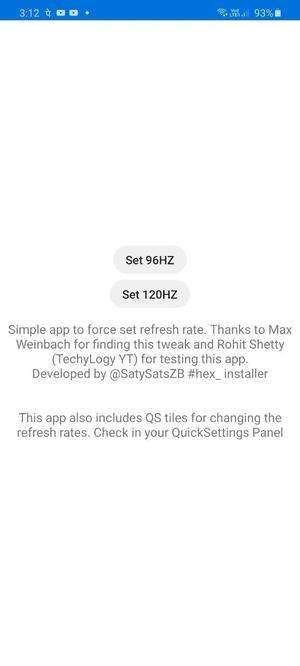2020 Mi Fan Festival
Mi Fan Festival aka Xiaomi MMF Sale is a huge online shopping festival announced by the Xiaomi company where Xiaomi’s lovers around the world can buy Xiaomi products on special deals and discounts.
Xiaomi Mi Fan Festival was first announced on April 6, 2012, but introduced to the global Mi fans at the Mi Fan Festival 2018, and widely known to customers since the Mi Fan Festival 2019.
The Mi Fan Festival Sale 2019 was held across the Xiaomi United States, online partner platforms, Mi Home, Mi Store, and many partner offline stores. During the Mi MFF Sale 2019, Xiaomi offered a lot of discount offers on cell phones, smart TVs, Mi bands and other Xiaomi products.
And now, the Xiaomi Mi Fan Festival 2020 is kicked off!
Xiaomi Mi 10: Finesse that doesn’t cost a fortune
Xiaomi is known for its powerful and affordable smartphones. While primarily known for affordable mid-rangers, it also makes premium flagship devices that are easy on the pocket. Last month, Xiaomi launched the Mi 10 and the Mi 10 Pro flagship devices in China with 5G, Snapdragon 865, a 108MP quad camera, a 90Hz AMOLED display, 30W fast wireless charging, and so much more. For users globally, Gearbest is just adding the Xiaomi Mi 10 to its portfolio and it will be available for a shockingly low price of $679.99. Not just that, you can use an XDA exclusive coupon code and get an additional $20 discount.
Buy Xiaomi Mi 10 on Gearbest for only $699.99 (after coupon) #Lowest Price
Get $20 off with coupon code GBMI10SALE
Display

The Xiaomi Mi 10 features everything you expect from a premium flagship killer phone. Starting with its display, the Mi 10 features a 6.67-inch Full HD+ curved AMOLED display. To the left on the top of the display is a tiny hole-punch for the selfie camera. The display is certified with HDR10+ for a better viewing experience and Xiaomi claims it reaches a peak brightness of 1120nits for unrestricted legibility irrespective of the ambient lighting. The 90Hz refresh rate and the 180Hz touch sampling rate make the Mi 10 a great choice for gamers.
Camera
One of the most exciting features of Xiaomi Mi 10 is its 108MP quad camera setup. The primary 108MP camera is quipped a large 1/1.33″ sensor from Samsung with a 7P lens setup along with OIS (Optical Image Stabilization). The sensor combines four pixels into one with pixel-binning and this results in 27MP images. In addition, there is a 13MP ultra-wide-angle camera equipped to capture a 123º wide landscape. Adding to those are two 2MP sensors, one for macro photography, and another for depth sensing. Pro mode and HEIF file storage ensure that the phone’s storage does not get filled with just pictures.

The Mi 10 can capture videos at up to 8K resolution, including 8K at 30fps, 4K at 30/60fps, and various slow-motion modes. It also features a cinematic mode for capturing photos and videos in a 2.35:1 aspect ratio.
The hole-punch on the front houses a 20MP selfie camera. It supports AI beauty mode, 3D face-mapping emoji called “Mimoji,” and slofies at 720p/120fps.
Connectivity
The Mi 10 from Xiaomi embraces 5G connectivity and readiness for the future of mobile communications. Thanks to Qualcomm’s X55 modem, part of Snapdragon 865 SoC, the Mi 10 supports non-standalone (NSA) and Standalone (SA) 5G networks. Wi-Fi 6 is also supported on the Mi 10 alongside Bluetooth 5.1 with AptX Adaptive. The phone also supports simultaneous Wi-Fi and 5G/4G connections for network stability. It also supports NFC for tap-to-pay.
Battery and Charging
Xiaomi has fitted a 4,780mAh battery inside the Mi 10. Besides 30W wireless charging, the Mi 10 also supports fast wireless charging at up to 30W. The battery, Xiaomi claims, can be charged from 0-100% in less than an hour. In addition, it also supports 10W reverse wireless charging for charging accessories like a pair of truly wireless earphones or Apple AirPods.
At the Mi 10’s launch, Xiaomi also announced a wireless charging stand, which resembles the Pixel Stand. Other than that, they also announced a Bluetooth speaker with a wireless charging pad on the top.
Performance
With the flagship-grade Snapdragon 865, the Xiaomi Mi 10 is among the most powerful smartphones. The 7nm octa-core Snapdragon 865 comes in a 1+3+4 configuration. It comprises one Prime core @ 2.8GHz, three Performance cores @ 2.4GHz, and four power-efficient cores @ 1.8GHz. The Mi 10 also comes with up to 12GB of LPDDR5 RAM and up to 256GB of UFS 3.0 storage.

The vapor chamber at the heart of the Mi 10 is claimed to keep the phone cooler by up to 10ºC. Additionally, Xiaomi also sells a rechargeable fan accessory which can be attached to the back of the Mi 10 allowing it to stay cooler despite continuous gaming for several hours.
Entertainment
Xiaomi has included dual linear speakers on the Mi 10 for a stereo sound output. The phone is also certified for Hi-Res audio to complement the display’s HDR10+ certification.
Xiaomi Mi 10 Specifications
| Specification |
Xiaomi Mi 10 |
| System-on-Chip |
Qualcomm Snapdragon 865
- 1x Kryo 585 (ARM Cortex A77-based) Prime core @ 2.8GHz
- 3x Kryo 585 (ARM Cortex A77-based) Performance cores @ 2.4GHz
- 4x Kryo 385 (ARM Cortex A55-based) Efficiency cores @ 1.8GHz
Adreno 650
|
| Display |
- 6.67″ AMOLED
- 2340 x 1080p resolution
- HDR10+
- 90Hz @ FHD+
- 180Hz touch response
- Peak Brightness 1120 nits
|
| Security |
- In-display fingerprint sensor
- Software-based face recognition
|
| Front Camera |
20MP |
| Rear Camera |
- 108MP Wide 1/1.33″, 7P lens, OIS
- 13MP Ultra-Wide, 123°, f/2.4
- 2MP f/2.4 Macro Camera
- 2MP f/2.4 Depth Sensor
|
| RAM |
up to 12GB LPDDR5 |
| Storage |
up to 256GB UFS 3.0 |
| Battery Capacity |
- 4,780 mAh
- 30W Fast Wired Charging, 30W Fast Wireless Charging, 10W Reverse Wireless Charging
|
| Software Version |
Android 10 |
| Connectivity |
- 5G: SA/NSA
- Wi-Fi 6
- USB Type-C
- NFC
- Bluetooth v5.1
|
| Network bands |
|
| Audio |
Stereo speakers, Hi-Res Audio certified |
| Colors |
Ice Blue, Titanium Silver Black, Peach Gold |
Compras en Línea Gearbest (Free, Google Play) →
We thank Gearbest for sponsoring this post. Our sponsors help us pay for the many costs associated with running XDA, including server costs, full time developers, news writers, and much more. While you might see sponsored content (which will always be labeled as such) alongside Portal content, the Portal team is in no way responsible for these posts. Sponsored content, advertising and XDA Depot are managed by a separate team entirely. XDA will never compromise its journalistic integrity by accepting money to write favorably about a company, or alter our opinions or views in any way. Our opinion cannot be bought.
The post 2020 Mi Fan Festival & Xiaomi Mi 10 Global Launch (with coupon code!) appeared first on xda-developers.
from xda-developers https://ift.tt/33OdqWi
via
IFTTT


























